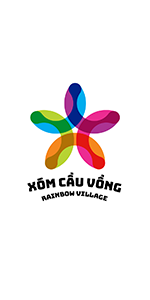Vietnam Plus – In recent years, Vietnam has maintained its success in controlling the rate of HIV infection in the population at less than 0.3%, and reducing the impact of HIV/AIDS on health and socioeconomic development of the country.
Hanoi (VNA) – In recent years, Vietnam has maintained its success in controlling the rate of HIV infection in the population at less than 0.3%, and reducing the impact of HIV/AIDS on health and socioeconomic development of the country.
Associate Professor Phan Thi Thu Huong, Director of the Vietnam Administration of HIV/AIDS Control under the Ministry of Health, made the statement at an event in response to World AIDS Day 2023, jointly organised by the UN Women and the Joint United Nations Programme on HIV/AIDS (UNAIDS) in Vietnam and the Centre for Women and Development held on November 24 in Hanoi.
Huong attributed those results to the financial and technical support of international organisations, the quick engagement of the Party and the Government, and the cooperation of the community.
According to statistics from the Health Ministry, Vietnam has about 249,000 people infected with HIV, of whom about 230,000 have been detected and are still alive. In recent years, implementing HIV/AIDS prevention and control solutions, Vietnam reduced the number of new infections and deaths related to HIV/AIDS by more than two-thirds compared to that 10 years ago. The rate of HIV infection decreased rapidly among drug users (from 28% in 2004 to 12% in 2021) and female sex workers (from 5.9% in 2002 to 2.5% in 2022).
However, the epidemic is still developing and the risk is still high. Surveillance data shows that the epidemic has increased in some localities. The HIV infection rate among drug users is still above 12%. That among men who have sex with men (MSM) rose rapidly in recent years (from 3.95% in 2011 to 5.1% in 2015 and 12.5% in 2022). The number of MSM accounted for about 42.3% of HIV-infected people detected in the first eight months of 2023. These were mainly in the young age group of 16-29 years (accounting for 41.7%), especially workers in industrial parks and students. In particular, in some provinces, the figure accounts for up to 80% of the total number of detected HIV cases.
Caroline T. Nyamayemombe, UN Women Representative in Vietnam a.i., stressed that in Vietnam, women make up one-third of the number of HIV-infected people. Women living with HIV face many challenges, such as being discriminated against, having difficulty accessing treatment and employment.
Therefore, it is important to implement preventive measures, provide adequate services for people living with HIV/AIDS, and fully recognise the challenges facing women to better protect them.
She emphasised the need to boost cooperation and partnerships between different networks and regions, and expand the engagement of the private sector to solve the challenges that women with HIV/AIDS are facing.
She also appreciated Vietnam’s issuance of the National Strategy on ending the AIDS epidemic by 2030 to address challenges related to HIV/AIDS.
There are currently 534 HIV/AIDS treatment establishments nationwide. This includes 506 supplying the antiretroviral (ARV) therapy covered by health insurance. As of September 14, there were 177,009 patients receiving ARV therapy, including 2,748 children and 174,261 adults, statistics show.
Efforts are being made to expand this therapy under the health insurance coverage and raise the rate of patients on ARV therapy achieving viral suppression to at least 95%.
Among the 249,000 people living with HIV in Vietnam at present, 88% know their status, 80% of those who know their status are on ARV therapy, and 98.4% of those on ARV therapy have achieved viral suppression./.

